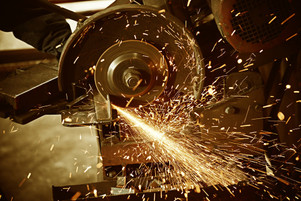Manufacturing materials and metalworking tools are arguably the two biggest priorities for any machining shop. This is effectively reflected in the budgets set apart for both. Sadly, most operators often consider coolants as an afterthought. This costly blind spot leads to a loss in productivity, material use, and eventual revenues.
Drilling, grinding, broaching, and other metal machining process can result in unwanted wear, oxidation, and chip weld for your tools and working materials. To extend the tool-life of your cutting equipment, consider using Castrol cutting fluid. The right coolant can help improve productivity, increase the lifespan of your cutting machines, lower operational costs, and protect your workers' health. Here are four tips to help you choose the right metalworking and cutting fluids.
1. Know Your Operational Types
The type of Castrol cutting fluid that you pick will depend on the nature of your operations. The four main applications of metalworking fluids are cooling, lubrication, chip removal, and corrosion control. Cutting fluids serve these specific functions depending on the needs of your machining processes. The qualities of the different oil solutions will guide you to a coolant that works best for your machines.
2. The Material You Are Working On
Metalworking and cutting fluids are the only materials that every part of a process, from your machining tools to the material being machined. Industrial lubricants are more compatible with certain metals than others. You may need to choose the right Castrol cutting fluid for the material you are working on for your project.
You may need to differentiate hard, low-machinability metals such as stainless steel from softer, malleable materials such as Aluminum. Generally, tougher materials will require tougher cutting fluids with greater lubrication and anti-chip weld to prevent build-up on the material being worked on.
3. The Cutting Fluid Type
Your options for Castrol cutting oil may fall under different categories including, straight, soluble, semi-synthetic, and synthetic lubricants. Straight cooling fluids are based on refined petroleum products. Also referred to as mineral oils, they contain no water and are commonly used in medium to heavy-duty applications at slower speeds.
Synthetic oils are based on oil-free solutions of polymers, organic and inorganic additions mixed in water. They work well at higher speeds and are perfect for lubrication, cooling, reducing oxidation, and smoke. Semi-synthetics consist of natural and synthetic compound emulsifiers. They offer better corrosion resistance, lubrication, and tolerance to contamination. Soluble oils are mineral-oil-based lubricants that contain additives to enhance lubrication, prevent rust and corrosion.
4. Machining Speed
The speed of your machining tools also has a great effect on the type of Castrol cutting fluid you pick. In low-speed application, the main function of the metalworking fluid is to lubricate the material and cutting edge.
Thread-cutting and broaching are excellent examples and a highly viscous oil is recommended. In high-speed applications, the primary function is to act as a coolant. Grinding, drilling, and milling may require low viscosity oils that will carry away the heat more efficiently.
Going with Castrol Cutting Fluids
You can pick your best Castrol cutting fluid by figuring out the different operational needs, material, oil type, and machining methods. You can emphasize cooling, lubrication, or corrosion resistance. If you need help in selecting your metalworking fluids, contact Santie Oil Company.

